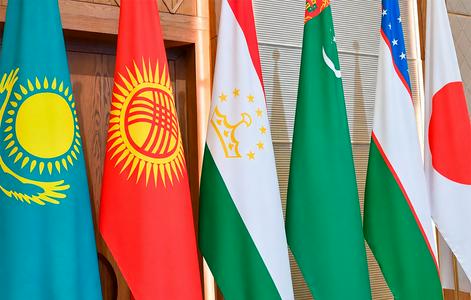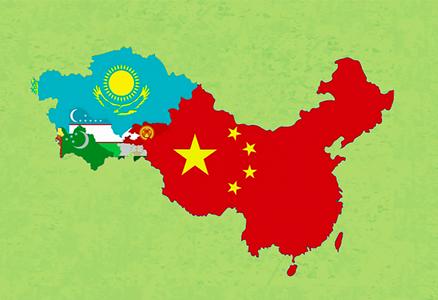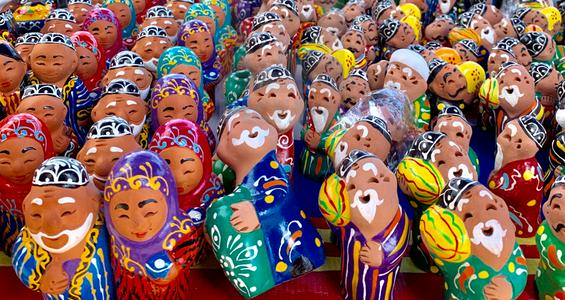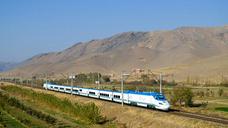Despite relatively low numbers of confirmed infections, Central Asian states have implemented swift and sweeping measures to contain the emerging COVID-19 epidemics on their territories. Schools and borders were closed and states of emergency declared as soon as the first cases in the region were reported, whole cities and districts have been placed in quarantine immediately upon confirmation of infections, and now large parts of Kazakhstan, Kyrgyzstan and Uzbekistan are under particularly heavy lockdowns. Most places of work are closed, with stay-at-home orders, maximum gatherings of three, bans on car travel, and fines for failing to wear masks in public. As of 4 March, Kazakhstan has reported 525 cases of COVID-19 and 5 deaths, Uzbekistan 266 (and 2), and Kyrgyzstan 144 (and 1), and the economies of much of these three countries have largely ground to a halt. Coming so soon after last month’s collapse of global oil prices and the Russian ruble, with their deep implications for Central Asian markets, analysts have been speaking of a “perfect storm” for the region’s economies. Here we summarise three recent articles containing interviews with economists published on our Russian website.
Some new anti-crisis measures have been implemented since these interviews took place. For a summary as of 1 April, see our earlier article “Central Asia in lockdown”, and for developments since then please refer to recent news stories.
When last month’s oil shock hit, Kazakhstan reacted fast, immediately setting up a special government committee, initiating work on an anti-crisis plan, raising interest rates and announcing its readiness to introduce price controls on socially-sensitive goods and protect jobs and salaries. The country, of course, had everything to worry about. With the state budget predicated on oil selling for $55-60 per barrel and not the low $20s to which it has dropped, memories of previous collapses in 2008 and 2014 (accompanied both times by crises in the Russian economy with which the Kazakh economy is so deeply enmeshed) were still fresh in people’s minds.
Now the region, like the rest of the world, has a second crisis to deal with: COVID-19. The economic consequences of the coronavirus pandemic, of course, stem not so much from the virus itself as from the measures taken to ward it off. Here we run into considerations familiar from the debate in Europe and the US, from Donald Trump’s earlier demand for the United States to be “open by Easter” to Swedish government spokesmen defending their country’s unusually lenient approach to the crisis by arguing that the extreme measures in many other countries as economically unsustainable. For developing and “transition” countries, both terms of the debate are more urgent. Their economies are more vulnerable, but more exposed still are their healthcare systems. The harsh measures being implemented across poorer nations newly touched by the virus are not simply due to lessons learned from the off-guard response of Europe and the US.
The epidemiological and medical consequences for the countries of Central Asia, as elsewhere, remain hard to predict. Significant factors include the fact that, as recently pointed out by Yegor Petrov in an article on the elderly in Central Asia on this site, Central Asian countries have comparatively young populations in global terms. The proportion of the population over 65 is around 3% in Tajikistan, just over 4% in Uzbekistan and Turkmenistan, and around 7% in Kazakhstan. In Italy this figure is almost 23%. Protecting the elderly from infection, however, may turn out to be significantly more difficult in regions like Central Asia where a large number of the elderly live together with their families.
The difficulty in making prognoses is compounded by the difficulty in finding reliable information on the readiness or otherwise of healthcare systems in Central Asia. A significant and commonly-used gauge here is the number of ventilators a country has. As usual, openness and reporting on this has been greatest in Kyrgyzstan, followed by Kazakhstan. The Kyrgyz health ministry has said that the country has 625 ventilators and that the World Bank will help it to purchase 200 more. The deputy health minister has stated that this number is sufficient (if we take recent estimates that the United States needs another 75,000 machines on top of an existing stock of 160 — 172,000 (including, apparently , 99,000 “obsolete but useable”), it would suggest a need for around one for every 1,400 citizens, which would equate to a need for nearly 4,000 machines in Kyrgyzstan (or around 2,200 if we only calculate by new machines), though of course the country has acted quicker to “flatten the curve” and has a significantly younger population). The Almaty authorities have said that the city’s hospitals have 579 ventilators, and the Uzbek government has announced plans to purchase 500 more of the machines (though from what base was not mentioned). Moreover, as Meduza has pointed out with respect to Russia’s ventilator statistics, not all ventilator machines are equal – some are modern and can provide 24-hour lung ventilation, others are older and designed for more restricted usage only. And ventilators are only one (if crucial) part of a whole complex of equipment, procedures and trained professionals needed to save the lives of critically ill coronavirus patients.
Tajik and Kyrgyz vulnerability
If the health implications remain unclear, the potential economic consequences of the current situation provide a little more material for speculation. With the highest number of cases of COVID-19 in the region, Kazakhstan currently finds itself on the front line of both crises. The government there has just revised earlier projections of 4% economic growth for 2020 down to a 0.9% contraction. With two sovereign wealth funds (totalling $135bn) in the world’s top 25, however, Kazakhstan has the means to deal with economic crises that other countries in the region can only dream of, and its current $10 billion anti-crisis plan dwarfs both Uzbekistan’s $1bn package and Kyrgyzstan and Tajikistan’s scrambling efforts to secure a few hundred million dollars from international donors. Rather than Kazakhstan, many analysts are predicting that it may be the much smaller economies of Kyrgyzstan and Tajikistan that suffer the most from the double crisis, as Ravshan Rajab’s recent article on Tajikistan makes clear. Some experts are even warning that, even if Tajikistan somehow avoids a severe epidemic, the combined effect of border closures and the ruble crisis could be comparable with the economic consequences of the country’s civil war.
One reason for Tajikistan’s vulnerability is the major role that tourism plays in the economy. As a result of the COVID-19 pandemic, since 20 March all flights into Tajikistan have been suspended. Cancellations have poured in, and new bookings are hardly to be expected while future developments are so unclear.
“We were expecting the arrival of a group from England,” said a representative of one tourism company, “and after them groups from other European countries, but all of them have had to cancel. Thanks to the suspension of flights, we have so far avoided the appearance of the coronavirus in Tajikistan, and that is important, but unfortunately the whole tourism industry has been paralysed.”
The manager of another tourism company told Fergana’s correspondent that she had been forced to let go of almost all of the firm’s staff. One Dushanbe hotel employee related how all 40 of the hotel’s employees had been placed on open-ended unpaid leave. The same fate has been reported for employees of some of Dushanbe’s luxury hotels and the country’s two major airlines, Somon Air and Tajik Air.
Nor is it just a question of those directly employed in the tourism industry losing their jobs. As the head of one tour firm points out, more than a hundred people benefit from every tour – not just tour firm employees and hotel workers, but drivers, waiters, artisans, souvenir-sellers, and many, many more.
The total loss to the country is significant. According to research by the World Bank, “every visitor to Tajikistan, besides the price of air tickets, spends on average $800-1400 over the course of a 6-12 day stay in the country”. This means that last year the Tajik economy earned somewhere between $960 million and $1.68 billion from tourism in 2019. Even if the country only loses half of the tourist season this year then this works out to losses between $480m and $840m, in a country with a GDP of $7bn.
As in previous crisis, the most worrying issue for the Tajik economy, however, is a fall in migrant worker remittances. Tajikistan (along with Kyrgyzstan) ranks in the top five countries in the world for remittances as a share of GDP, with migrant worker cash receipts officially equivalent to 30% of GDP and the actual transfer flow, according to Tajik economist Abdumannon Sharipov, twice that amount. Around a million Tajik citizens work abroad in Russia and 400,000 families depend on their remittances, in a country with population of less than nine million and average household size of six.
“Russia closing its borders to foreigners, including labour migrants, even for three months (I think this will be the minimum period) will decrease the volume of transfers by 25-30%,” says Sharipov. “And the Russian economic slump and the fall in the value of the ruble will do the same again.”
What threatens Tajikistan against the background of the coronavirus pandemic, he says, is “far more serious” than the crises of 2008 and 2014 combined.
The prospects for Uzbekistan
The same mechanism threatens other Central Asian countries to varying amounts: to a similar extent as Tajikistan in the case of Kyrgyzstan, where remittances are also equivalent to around 30% of a slightly larger GDP, much less so in the cases of Kazakhstan and Uzbekistan with their far larger economies ($181bn and $58bn respectively) and lower ratios of remittances to GDP (6-10% and 0.4%). At the same time, Kazakhstan, Kyrgyzstan and Uzbekistan already find themselves in the midst of particularly extensive lockdowns. Reports are already flooding in of hardship in cities like Bishkek, and the Kyrgyz government has said that 1.8 million Kyrgyz could lose their jobs, a huge proportion in that country. Unsurprisingly, the two Uzbek economists we spoke to focused on this aspect of the crisis.
Though supportive of the lockdown measures in place in Uzbekistan as the only way to avoid overloading an ill-prepared health service, like economists all over the world right now, both are above all concerned about what Yuliy Yusupov calls “the classic multiplier effect” kicking into a negative spiral: the halt in economic activity (and lay-offs) leads to a drop in incomes, which causes a decline in demand, leading to fall in production, resulting in lower incomes, and so on.
Nodir Nurmatov is particularly concerned about the effect on small and medium-sized businesses. Large businesses have some reserves to survive on; small and medium-sized businesses do not have this luxury. Moreover, they employ 76% of the working population in Uzbekistan. Many of their employees – workers in tourism, catering, entertainment, education and a whole host of other sectors currently risk a minimum of two months without any income. As Nurmatov points out, 82% of the population in Central Asia have no significant savings. As the crisis continues, their attention will turn more and more towards simply surviving. Businesses involved in the production and sale of essential goods such as food, of course, will emerge relatively unscathed, but those trading in durable goods and unessential services will be hit hard – “Demand for durable goods such as apartments, cars, furniture and household appliances will recover only several quarters after victory over the virus,” says Nurmatov.
Yuliy Yusupov, like Abdumannon Sharipov with respect to Tajikistan, points to Uzbekistan’s import and export structure as a particular risk factor. As is the case with Kazakhstan and oil, major exports are raw materials or products that will see a drop in demand during the present crisis (cotton, aluminium, cement, electricity for Tajikistan; cotton and minerals for Uzbekistan). At the same time, imports will become more expensive and scarcer, and production in Uzbekistan will be affected by interruptions to the supply of key import materials. As a result, countries in the region are likely to experience a serious problem with their balance of payments, especially as the drop in labour remittances will remove a key source of foreign exchange. Moreover, Yusupov explains, a major part of both export and remittance income come from Russia and Kazakhstan – countries whose currencies are strongly dependent on global oil prices. The collapse in the value of the ruble and the tenge will reduce foreign exchange inflows into Uzbekistan and at the same time render Uzbek products less competitive in comparison to Russian and Kazakh ones. As in Tajikistan, the reduction in foreign exchange inflows will also further press down incomes and purchasing power within Uzbekistan.
In the most pessimistic scenario, Nurmatov says, between March and May the Uzbek economy will slump by 50% compared to last year, and unemployment will rise from the current 9% to 40%. If the epidemic continues for longer then food security could start to become an issue.
So how can the country ward off such a scenario? Both economists agree that vigorous government measures are necessary.
Nodir Nurmatov says that while initial anti-crisis measures, such the easing of loan repayment terms and rent deferments on commercial properties have allowed many small businesses to survive so far, much more is needed both for businesses and for the wider population. The government needs to draw heavily on its reserve funds (which he says are more than $30 billion) and immediately start to pay vulnerable segments of the population benefits for the purchase of necessities (it should be mentioned that Uzbek president Shavkat Mirziyoyev this week sent back an anti-crisis draft law for further work, complaining of the lack of concrete measures for vulnerable groups; in Kyrgyzstan, a government anti-crisis social plan unveiled this week envisages state assistance in the form of food parcels only). Yusupov, too, suggests the possibility of one-off payments to families, perhaps dependent on the number of children.
Like the Tajik economist Sharipov interviewed by Ravshan Rajab, Nurmatov says special measures for returning migrant workers are required. While Sharipov advocates distributing agricultural land to would-be migrants unable to travel abroad or those forced to return (urging the government to give up at the same time on its cotton plans for this year so that villagers can feed their families), Nurmatov proposes that the government opens special employment training centres. This, he suggests, could ease the social tensions and rise in crime that could otherwise accompany the growth in unemployment.
Nurmatov also suggests a temporary suspension of personal income tax and a freeze on social security payments for small and medium-sized businesses. Both he and Yusupov see a devaluation of the som as inevitable, though Yusupov warns of the effects on inflation. A controlled devaluation of the som, Nurmatov argues, will not only allow local businesses to survive but also free up funds for further anti-crisis measures. “We have to remember that this is no ordinary situation, that the measures we take need to be timely, decisive and even disproportionate, and that the bankruptcy of a single entrepreneur leads to the loss of 30 jobs,” Nurmatov says.
Yusupov, though, adds a note of caution, supporting bold fiscal measures such as tax holidays but warning that monetary measures will not work in Uzbek conditions. “Implementing a stimulative monetary policy in conditions of high inflation and the threat of a sharp devaluation of the national currency is extremely risky – it could end up breaking the financial system and leading to huge inflation. Besides this, the traditional market tools of monetary policy still don’t function properly in Uzbekistan. Commercial banks (the largest of which are owned by the state) provide loans at preferential rates on the orders of central and local government. In such conditions the refinancing rate (the basic tool of monetary policy) is a fiction. It has no effect on free market rates (which are 1.5-2 times the discount rate due to the shortage of money and the need for banks to cover losses from preferential loans), and still less on the interest rate of preferential loans,” the economist explains. One of the key points of scheduled reforms of the banking sector, he points out, was precisely the abolition of preferential loans. Now there is a danger that this will be forgotten and a new wave of cheap credit will begin.
In fact, Yusupov is concerned more generally by the potential effects of a resurrection of significant state intervention in the economy on the ambitious project of economic liberalization currently underway in Uzbekistan. Now all of these reforms (privatisation, financial sector reform, agrarian reform, etc.) will be put on hold. But the danger is greater than this.
“In periods of crisis, purely administrative methods of acting on the economy are brought back into use, including reliance on a wide range of prohibitions and restrictions and even attempts to regulate market prices. In times of crisis, some of these measures are inevitable. But the problem is that state officials in Uzbekistan are too used to them and find them too convenient. They were only just starting to accustom themselves to doing without them, and now they’re being used again. It may convince them of the all-powerfulness and absolute necessity of such measures, and weaning them off of them again will be extremely difficult.” It could, he says, strengthen the view that the country needs a closed, self-sufficient economy, insulated from the outside world, still prevalent among some officials and influential community figures.
The state needs to know its limits, he says, “otherwise the cure could be worse than the disease”.
Both Nurmatov and Yusupov caution that, in such a global crisis, Uzbekistan should not rely on being able to obtain external aid. Both, however, are optimistic about the country’s chances, provided the government takes the right steps. “Our fate is in our own hands,” Yusupov says, “We have every chance to get ourselves out of this crisis and revive the economy.” “Nobody will solve our problems for us,” agrees Nurmatov, “[but] without the above-mentioned measures of support for the public and for business, the economy could be thrown years behind.”
-
 24 December24.12To Clean Up and to ZIYAWhat China Can Offer Central Asia in the “Green” Economy
24 December24.12To Clean Up and to ZIYAWhat China Can Offer Central Asia in the “Green” Economy -
 23 December23.12PhotoTokyo DriveJapan to invest about $20 billion in projects across Central Asia over five years
23 December23.12PhotoTokyo DriveJapan to invest about $20 billion in projects across Central Asia over five years -
 17 December17.12Sake for SixCentral Asia’s Rapprochement with Japan Comes with Hidden Pitfalls
17 December17.12Sake for SixCentral Asia’s Rapprochement with Japan Comes with Hidden Pitfalls -
 24 November24.11Here’s a New TurnRussian Scientists Revive the Plan to Irrigate Central Asia Using Siberian Rivers
24 November24.11Here’s a New TurnRussian Scientists Revive the Plan to Irrigate Central Asia Using Siberian Rivers -
 17 September17.09Risky PartnershipWhy Dealing with China Is Harder Than It Seems at First Glance
17 September17.09Risky PartnershipWhy Dealing with China Is Harder Than It Seems at First Glance -
 13 January13.01PhotoNothing but gains promisedThe campaign to promote EAEU membership is underway in Uzbekistan
13 January13.01PhotoNothing but gains promisedThe campaign to promote EAEU membership is underway in Uzbekistan










